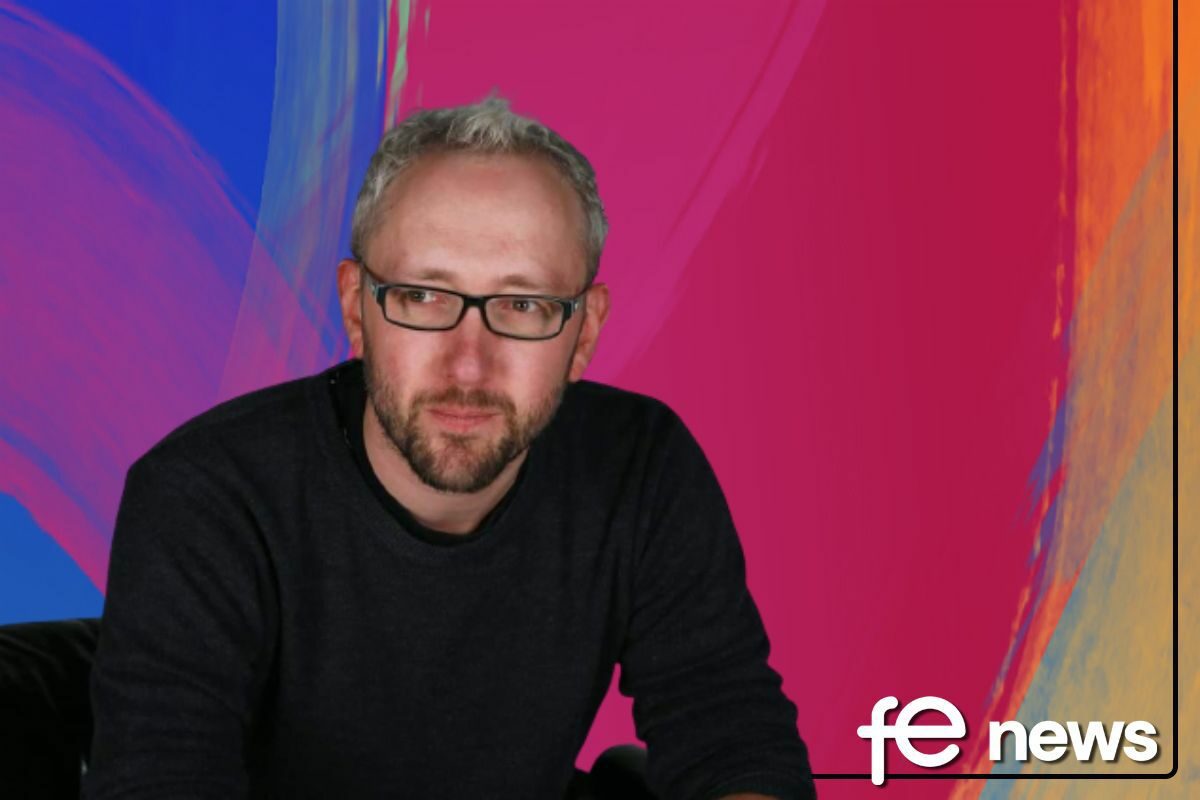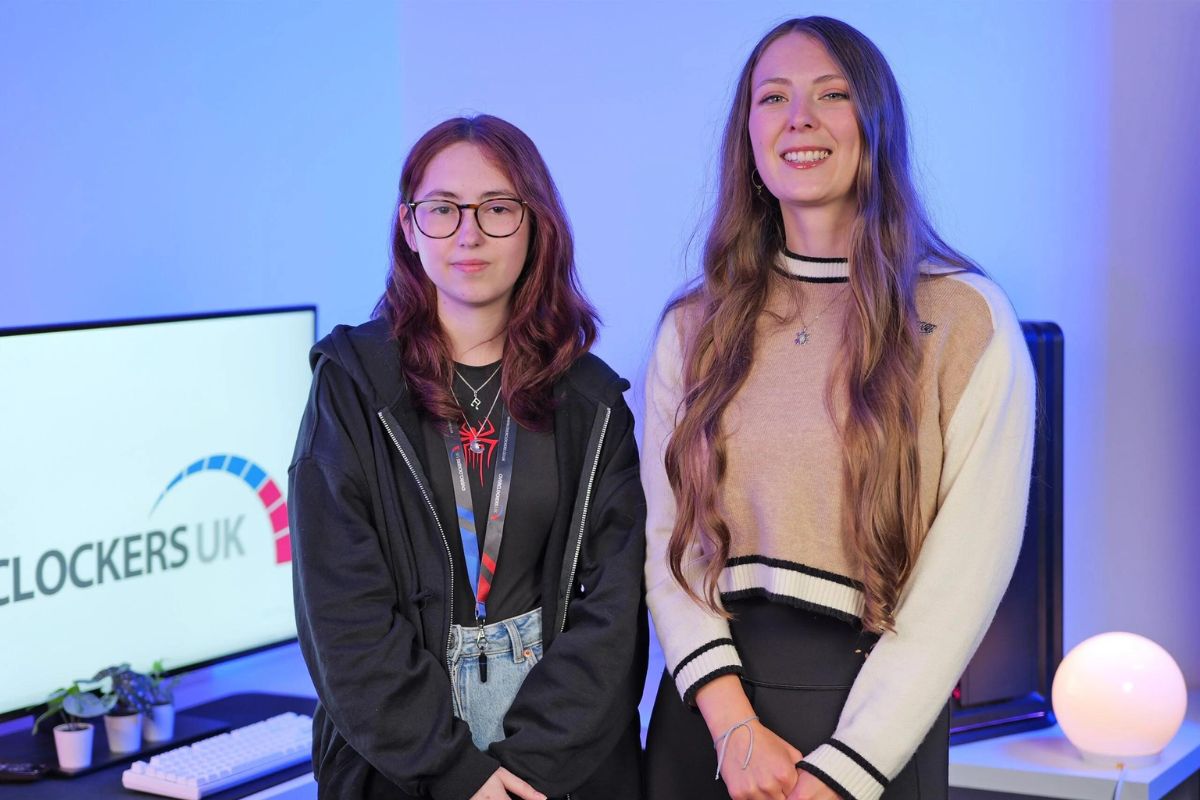The Impact of Creative AI

The UK government has highlighted Artificial Intelligence as one of the four ‘Grand Challenges’ which will transform our future. However, what this transformation will look like is very much unknown, but we are standing on the edge of a technological revolution no one can truly comprehend.
Humans generally have a tainted representation of AI in stories; AI is created to serve humans, but it becomes aware that we are irrelevant, and tries to destroy us. At SXSW 2018, Tesla’s Elon Musk said the current state of AI regulation is “insane,” calling the technology “more dangerous than nukes.” But why are we so scared of AI, and how could it impact our jobs, or even our humanity?
The Fourth Industrial Revolution
In spite of growing concerns about the impact of the Fourth Industrial Revolution on careers and the need to reskill when jobs become obsolete, there is still a lack of education around AI in FE. Could we be preparing students for careers which might vanish? Also, how do we take advantage of the abundant opportunities to address and explore these exciting new domains through creative qualifications?
It is most likely that repetitive jobs will be the most affected at first. A report by PwC for the Department for Business, Energy and Industrial Strategy identified that ‘clerical and routine manual roles may see negative net employment effects that start to come through over the next 5-10 years as technologies such as robot process automation roll out across the economy.’
But what skills will be in demand in the future and what will the impact be on the creative industry? Surely human creativity will be a valuable skill in this new world.
Artificial Intelligence is already infiltrating the creative industry in many ways. For example, Adobe uses AI to develop new effects and tools that can speed up the design process. Shantanu Narayen (CEO, Adobe) stated ‘Machine learning is going to change every single aspect of technology, but no machine will be able to mimic the creative ability of the human mind”. This is a very positive view for the creative industry and will most likely remain true for a long time, if not indefinitely.
In the past, we have seen attempts by companies to automate news writing. Yet, these attempts were unsuccessful, because they failed to understand the fundamental differences between a human and artificial intelligence. Many people are doubtful about the future of AI journalism due to its lack of understanding and accuracy in conveying emotions and contextual information. However, if it is used as a tool to assist journalists in their work, it could prove to be an asset in the future.
The previous paragraph was produced using an AI writing assistant that generates content called Ryte. I entered the topic ‘AI journalism’, and it wrote that for me. Could you tell? This highlights one of the issues that Shantanu Narayen doesn’t address: AI may never be able to mimic the creative mind, but it can economically devalue creative output and skills.
Deepfakes are probably one of the most infamous forms of deep-learning algorithms. They make a person appear to have done something they didn’t by mapping a face onto a video of another body and the dangerous impact of these has been discussed at length in mainstream media. Now, new deepfakes are emerging that use audio and can “clone” a voice that can be indistinguishable from the real person.
In 2020, Jay-Z filed a DMCA copyright claim to remove a video from YouTube where he appears to recite the “To Be, Or Not To Be” soliloquy from Hamlet. It seems it was ‘not to be’ for Jay-Z, because the video remains on YouTube as, according to the US Copyright Act, you can’t copyright the mannerisms of someone’s voice.
Even if Jay-Z had won the case, the impact of realistic AI voices could have a large impact upon areas of the creative industries. Equity, the performing arts workers union, has launched a new campaign to strengthen the rights of performance in this developing AI world. Their report identifies some worrying statistics, for example, ‘65% of respondents thought the development of AI technology poses a threat to employment opportunities in the performing arts sector. This figure rose to 93% for audio artists.’
Audio artists are particularly concerned and, according to Bradley Metrock, CEO of Project Voice and of Digital Book World, ‘in 12–24 months high-end synthetic voices will have reached human levels’. Businesses will most likely choose the option that is faster and cheaper, and the ability to earn a living through the skills of audio
storytelling could disappear. Similarly, synthetic voices could replace other voicework and impact industries such as radio broadcasting.
Large corporations are already using AI software to impact the movies we watch. The Disney Corporation have a partnership with an AI company to check film and TV scripts for gender bias. The software ‘GD-IQ: Spellcheck for Bias’ analyses scripts to determine the representation of six identities: gender, race/ethnicity, LGBTQIA+, disability, age 50+, and body type. In addition, Spellcheck for Bias provides an analysis of tropes and stereotypes and monitors racial injustice, violence, discrimination, and intelligence. So, this AI tool identifies unconscious bias in scripts and allows Disney to produce stories that are more representative of the global population.
However, can you truly remove bias, or does it exist at the level of the coder who writes the algorithm?
Another large film company, Warner Bros, signed a deal with Cinelytic. Their AI uses predictive analytics to guide the decision-making process at the green-light stage, so production companies can try to avoid making an expensive flop. The AI can provide critical insights about star value in different regions, directors, successful plot lines and other factors which contribute to a film’s success.
In the expensive and risky film industry, it is understandable that companies may use AI to reduce investment risks and appeal to audiences, but is it possible that widespread use of this software could lead to content monotonicity?
Storytelling is innately human and helps us make sense of the world, but could the actual stories we read, watch and listen to be altered or replaced by artificial intelligence? Experiments using AI to generate screenplays are already being conducted and the results generated are a broad spectrum from complete nonsense to very respectable. Eli Weiss and Jacob Vaus have been conducting experiments using OpenAI’s GPT-3 which provides a ‘text in-text out’ interface. This allows them to put in a few lines of text and produce full AI scripts or scenes, such as their short film Date Night, a new Dr Seuss Novel, or a fictitious lost scene from the 2017.
The results of these early AI experiments demonstrates great potential and even if they cannot generate original scripts with the complexity of films like Pulp Fiction (1994) or Parasite (2019), the impact on some areas of scriptwriting could be significant. At 5 am this morning, I sat with my baby daughter watching Peppa Pig and I couldn’t help but wonder how simple it would be to generate an episode using AI.
IBM has described creativity as ‘the ultimate moonshoot for artificial intelligence’. In a recent experiment, they used their AI platform ‘Watson’ to edit their horror trailer about an artificially enhanced human. The quality of the trailer is fantastic and, as an editor, it is not just the content that is scary, but the impact on editors. Hundreds of comments on the YouTube page seem to approve of the trailer, for example, ‘Why is this trailer better than any other trailers that I have seen in the last 15 years? I know enough to be intrigued, the premise is related, but the plot isn’t given away. A+ work to Watson.’
The birth of new creativity
It’s important to recognise that while AI will impact aspects of our lives, it also has the potential to improve them. Creativity and creative skills have more often been enhanced by technological disruption than hindered by it. The AI revolution promises creative growth in many areas and while some jobs and processes will change or disappear, others should emerge, and people will develop new ways of working in symbiotic relationships with AI. The positive vision for AI is one of co-creativity, where AI will assist creative professionals, not replace them.
Indeed, Jerome Pesenti, Facebook’s head of AI, stated ‘Some of the most exciting things we’re doing are trying to create new experiences that are only possible with AI…There is huge potential in making people more creative’.
Time for innovation
AI will be able to take care of all the repetitive tasks that are present in many creative workflows. For example, it could produce hundreds of rough drafts and generate ideas which would allow the artist to start their design from a more developed point. This automation would speed up the creative process and enable creative projects to be more innovative within project timeframes.
New exploration
AI can help our decision-making process by adding machine data analysis to our creative decisions. One key turning point I remember was Kasparov losing a chess match to IBM’s Deep Blue in 1997. Chess was never the same again. It felt like the tables had turned on human intelligence and strategic thinking. Yet now, chess players and even grandmasters use AI to explore even more creative lines. Rather than destroy chess, it allowed humans to become better at it. It is our tool.
AI is being used in a similar way to inform architects to generate ideas and simulate materials. Also, creatives like new media artist, Refik Anadol, use AI to enhance their exploration of materials and embed hypnotic media arts into architecture.
Problem-solving
The ability of AI to analyse problems is phenomenal. AI doesn’t have to be as clever as a human, it’s the speed of processing that is important. By feeding AI huge amounts of data, it can solve global problems, such as the challenges around sustainability. UAL Creative Computing Institute is exploring the integration of AI in the creative industries and looking at ways to reengineer industries, such as fashion, and address issues of sustainability and innovation.
The unknown future
AI’s enormous potential is both frightening and exciting at the same time and reminds me of the early pioneers of atomic science. The benefits to humanity in industries such as healthcare, science, manufacturing, creativity and media might be some of the most globally significant changes in our lifetimes, and I feel positive about creatives’ ability to use AI to produce and drive new designs and thinking.
Yet, no one knows where this AI journey will take us, and the current algorithms will be dinosaurs compared to what many predict is possible. There may be a time when AI becomes more than creating something new, unique, and original. Stephen Hawkins postulated that if an AI could design AI it would result in “machines whose intelligence exceeds ours by more than ours exceeds that of snails.”
I started the article with a warning from Elon Musk, but I will finish with a positive one from his most recent interview for the TED Talks ‘it will be a world of abundance, the only scarcity that exists in the future is that which we decide to create ourselves as humans’.
By Julian Watkiss, Chief Examiner for Creative Media Production and Technology, UAL











Responses